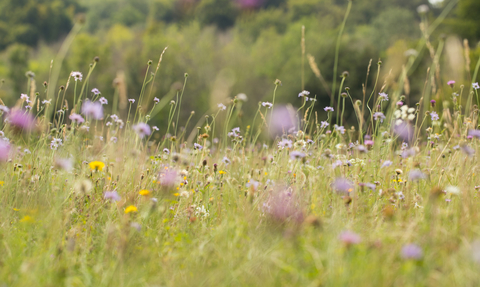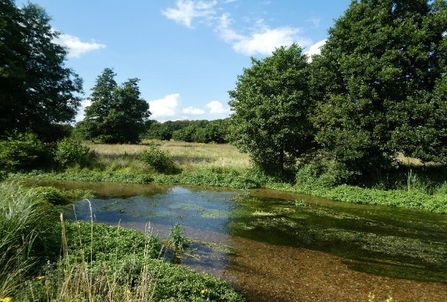
Sheeplea Meadow © James Adler
Strategic Changes to Our Nature Reserves
As part of our ongoing efforts to maximise the impact of our conservation work, we have undertaken a thorough review of our nature reserves and how we can best allocate our limited resources.
The nature crisis has escalated, and with it, the financial and operational challenges of managing our estate. After careful consideration, the Trust has made the decision to step away from seven of our nature reserves, which collectively make up less than 3% of our total land holdings. This decision reflects our commitment to focusing on sites where we can have the greatest positive impact, ensuring that our resources are used as effectively as possible for nature’s long-term benefit.
The Trust oversees a diverse and complex estate - our nature reserves cover some 700 hectares acquired over many decades, managed through a variety of tenure arrangements and spread across all corners of our area. In recent years we have recognised that we are failing in our goal for Trust land to be exemplars of what can be achieved in terms of nature’s recovery. The reality is that our resources are stretched too thin, and something needs to change.
As a charity entrusted with the responsibility of caring for land, it is crucial for us to regularly review our activities to ensure we are using our limited resources in the most effective way possible to make the greatest impact for wildlife. When we took on the management of some of our nature reserves, many decades ago, the world was vastly different. The urgency of the nature crisis was less pronounced, and financial challenges were far less pressing than they are today.
Over the last 18 months, we’ve proactively scrutinised our estate and provided inward challenge as to why we continue to retain some sites where our impact is limited. With the approval of our Trustees and after much careful consideration, the Trust has decided we are no longer the best custodians of the following nature reserves: Longspring Wood, Oughtonhead, Rabley Pits, Royston Chalk Pit, Stocking Springs Wood, Uxbridge Alderglade and Willowmead.
Whilst these seven sites are home to some important habitats, and function as significant stepping stones across the landscape, our continued involvement at these sites will only put increased strain on our resources and divert our energy and investment away from caring for our most ecologically valuable sites or those facing the greatest risks.
For some, like Oughtonhead, Stocking Springs Wood and Willowmead, which we manage under a lease or management agreement, this will mean handing them back to the capable care of their landholders – all of whom have a strong commitment to managing land for nature’s recovery as we do.
For others, like Longspring Wood, Rabley Pits, Royston Chalk Pit and Uxbridge Alderglade, which we own outright, this will mean taking time to explore their potential sale, with all the necessary precautions in place to ensure they are not put at risk and always looked after for wildlife. These are all unique sites and will continue to persist within the landscape and be core to our evolving nature recovery network. However, their ongoing management won’t necessarily be overseen by the Trust in the long-term, and the proceeds of any sales will be able to be reinvested into our remaining nature reserves and the wonderful team that cares for them day-to-day.

Archers Green is a shining example of what we can achieve when we focus our efforts on protecting and enhancing important and rare habitats at risk. By better aligning our resources with our estate now, we hope to be able to step up to protect other sites like this and ensure their future as thriving havens for wildlife.
We very much hope that by better aligning our resources with a more manageable estate now, we will make the Trust more resilient and better placed in the future to explore taking on and protecting new sites at risk or those in poor condition - just as we have done in recent years when we successfully mobilised to acquire and protect Archers Green, Astonbury Wood and Beane Marsh.
We would like to take this opportunity to thank all the volunteers and other supporters who have been involved in helping to care for these nature reserves over the years. This has not been an easy decision; we have much fondness for these sites as many of you will have but we have to position the Trust to deliver more impact for nature now.
Chloë Edwards, Director of Nature Recovery
